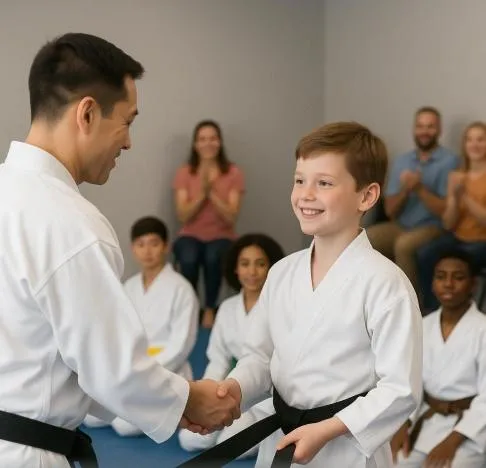
How Martial Arts Supports Kids with ADHD and High Energy
"The more I learn, the more I realize how much I still have to learn.” - Socrates
Parenting a child with ADHD or boundless energy can be both rewarding and challenging. These kids often have incredible creativity, resilience, and enthusiasm—but they can also struggle with focus, impulse control, and managing their energy in structured environments. Many parents search for activities that can help their children channel energy positively while also building important life skills.
That’s where martial arts comes in. Martial arts isn’t just about punches, kicks, or earning belts—it’s a carefully structured practice designed to promote discipline, focus, respect, and self-regulation. For kids with ADHD or high energy levels, it can be a game-changer.
In this blog, we’ll explore how martial arts helps neurodiverse kids thrive, both inside and outside the dojo.
1. Structure Provides Predictability
Children with ADHD often benefit from clear routines and expectations. Martial arts classes are built on structure—every session begins with rituals such as bowing, lining up, or warming up. Instructors set consistent expectations for behavior and effort, which provides the predictability many kids need to feel secure.
This structure isn’t rigid or punitive; instead, it creates a safe environment where kids know what’s coming next and how they are expected to participate. Over time, that familiarity builds comfort and confidence.
2. Movement Channels Energy in Positive Ways
Kids with ADHD frequently have bursts of energy that can make it difficult to sit still in classrooms or other quiet environments. Martial arts embraces movement, giving children a positive outlet to burn energy while learning skills that demand control and precision.
Instead of being told to “calm down” or “sit still,” kids are encouraged to kick higher, punch sharper, or practice faster—always with discipline guiding their effort. This physical release often helps children regulate emotions and return home or to school feeling more balanced.
3. Focus is Built Through Small, Achievable Goals
Concentration is a muscle, and martial arts trains it step by step. Instructors break down techniques into small, manageable pieces. Kids learn to focus on one movement at a time, whether it’s holding a stance, blocking correctly, or memorizing a short sequence.
Earning stripes, patches, or new belts along the way reinforces their progress. Each achievement is a confidence boost, teaching kids that paying attention and staying consistent leads to real rewards.

4. Discipline Teaches Self-Regulation
ADHD can make impulse control difficult, but martial arts addresses this head-on. Kids learn that respect and self-control are core values of their training. Whether it’s waiting their turn during drills, respecting an instructor’s command, or showing courtesy to classmates, martial arts constantly reinforces self-regulation.
Over time, these lessons spill into other areas of life—such as being more patient at school, listening better at home, or controlling impulses in social settings.
5. Builds Confidence and Reduces Anxiety
Children with ADHD sometimes struggle with self-esteem, especially if they’ve faced criticism for being “too hyper” or “distracted.” Martial arts flips that narrative. Instead of being punished for their energy, kids are celebrated for their effort, determination, and progress.
The consistent encouragement from instructors, combined with visible achievements like belt promotions, helps kids see themselves as capable and strong. This confidence often reduces feelings of anxiety and frustration, creating a more positive outlook overall.
6. Social Skills and Friendship Opportunities
Many kids with ADHD find social interactions challenging, but martial arts offers a safe and supportive space to connect with peers. Partner drills, buddy exercises, and team-based challenges foster collaboration, communication, and trust.
Friendships formed in martial arts are often rooted in shared effort and mutual respect, giving kids a healthy sense of belonging.
7. Tools That Last a Lifetime
The discipline, focus, and self-regulation kids build through martial arts don’t just stay on the mat. They carry into school, sports, and everyday life. Parents often notice improvements in classroom behavior, homework routines, and even family interactions at home.
For children with ADHD and high energy, martial arts provides more than physical skills—it’s a foundation for lifelong growth and success.
Final Thoughts
Every child deserves a place where their strengths are recognized and their challenges are supported. Martial arts offers exactly that. Through structure, movement, discipline, and encouragement, kids with ADHD or high energy can thrive—not just as martial artists, but as focused, confident, and resilient individuals.
If your child has energy to spare or struggles with focus, consider giving martial arts a try. You may find it’s the perfect balance of activity, structure, and growth they’ve been needing.
